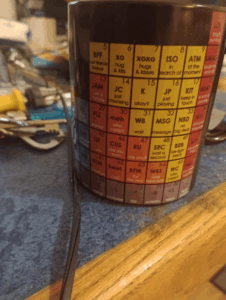In Commercial Premises, the law prescribes that we must carry our a full evacuation of the building regularly. Regulatory Reform (Fire Safety) Order 2005) These evacuations should happen at least ONCE every SIX MONTHS and should encompass the full evacuation of the building, to an external assembly point. The reason for these drills, is to make sure everyone knows what to do, if the fire alarm does sound.
So, lets talk about the best practices in a fire drill.
Never Announce the Drill
Fire Drills should be kept a secret. Only those that need to know, should know when the alarm will sound. This is done to make sure that people do not ignore the alarm when it sounds. I know about the fire drill at work next week, because of my position. This is ‘need to know info.’
Don’t Make it Obvious
You don’t want to make the evacuation obvious. That is why it is important to activate the alarm from a point where there are lots of people. Activate the alarm the normal way, using a ‘break glass unit,’ either by activating the same way as you would when there is a fire, or using the test key. (Which goes into the bottom or side of the break glass unit)
Make Sure You Review Your PEEP Documents
If you have disabled people, make sure that you have reviewed your Personal Evacuation Plans. (PEEPS) This will help you to plan the evacuation and allow you to ensure disabled people are evacuated safely.
Let Your ARC Know, If You Have A Monitored System)
If you have a monitored system, it is important to let your Alarm Monitoring Centre know you are carrying out an evacuation. This will prevent them from calling out the Fire Service. If you do not have a monitored system – you should ring the non emergency number for your local Fire Authority and let their control room know. You can normally find this number on the website for your local Fire Authority. It may also be a good idea to let neighbouring properties know, so they do not call 999.
Make Sure Your Fire Marshals Help To Clear The Building
Your Fire Marshalls should make sure that the building is fully evacuated. Those Evacuating, should stop what they are doing and be encouraged to leave their personal possessions where they are. Evacuation should then be carried out via the nearest exit.
Proceed to the Assembly Point
Make sure everyone goes to the Assembly Point and make sure they stay there until the evacuation is stood down. It is a good idea to keep someone at a safe distance from the building, to make sure other people do not enter the building, until the evacuation is stood down. The Assembly Point, should be at a minimum of 50 feet away from the building.
Standing Down
The evacuation should be stood down, verbally. “Thank you, it is now safe to go back inside the building” is a example you can use. If like us, you use 2 way radios, make sure that you clearly state something along the lines of: “Fire Alarm Stand Down, I repeat… Fire Alarm Stand Down.” This lets everyone know that the incident is stood down and that it is safe to go back into the building.
Log in the Fire Alarm Log Book
Make sure that you log the evacuation in your Fire Alarm Log Book and let the ARC \ local Fire Authority know, the drill is complete.
What is the best achievable time to evacuate the building?
Ideally, the building should be fully evacuated within 2 minutes






 I have had a few brews out of the mug. (Coffee, 3 sugars and very milky) Sadly, my bathroom mats are not a full set. It was missing the mat for around the toilet. This is why my boss sold it to me for a mere £2 for both mats. I may be able to get a mat that matches online. At least now I don’t have to stand on the cold Lino, when I get out the shower!
I have had a few brews out of the mug. (Coffee, 3 sugars and very milky) Sadly, my bathroom mats are not a full set. It was missing the mat for around the toilet. This is why my boss sold it to me for a mere £2 for both mats. I may be able to get a mat that matches online. At least now I don’t have to stand on the cold Lino, when I get out the shower!